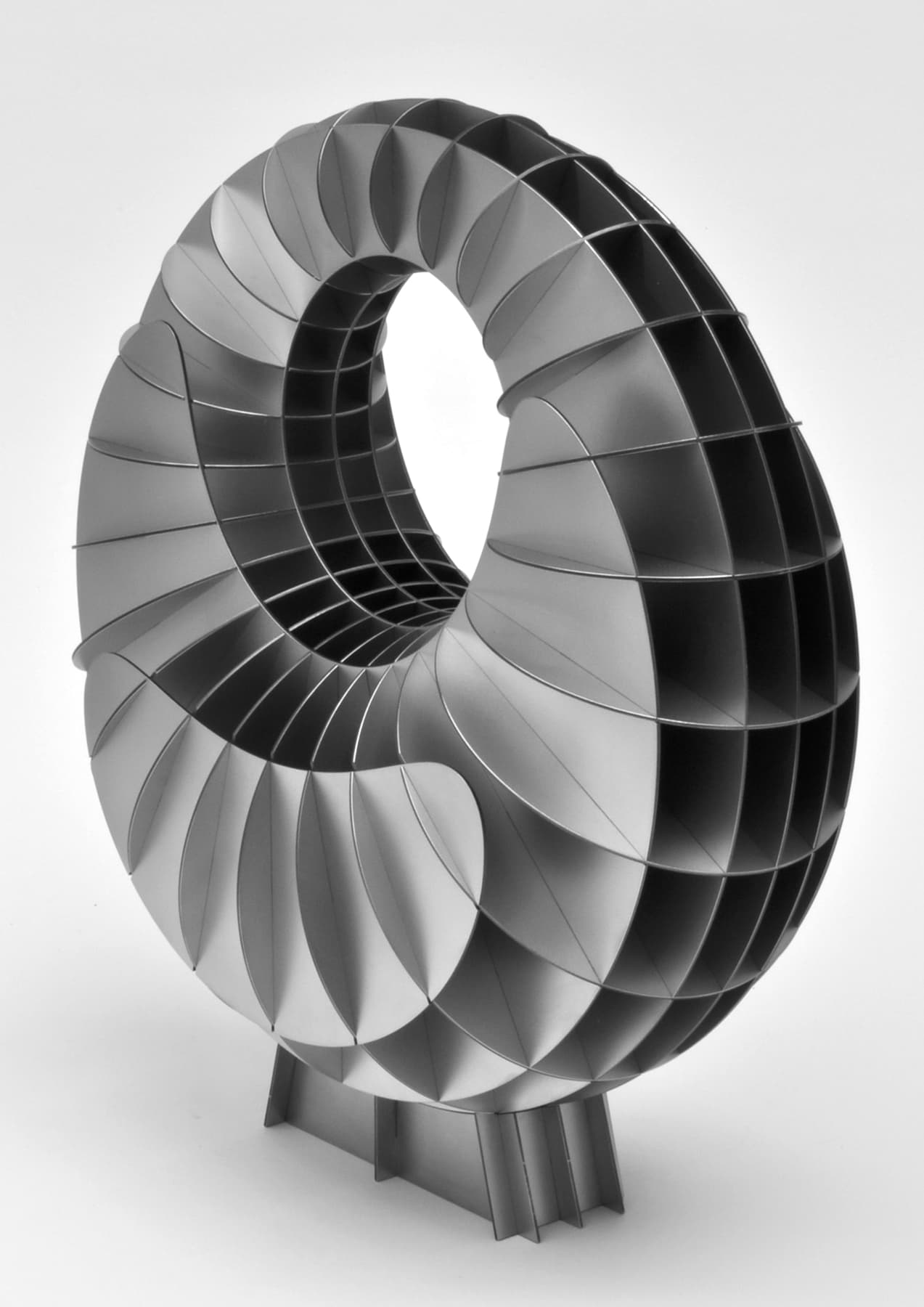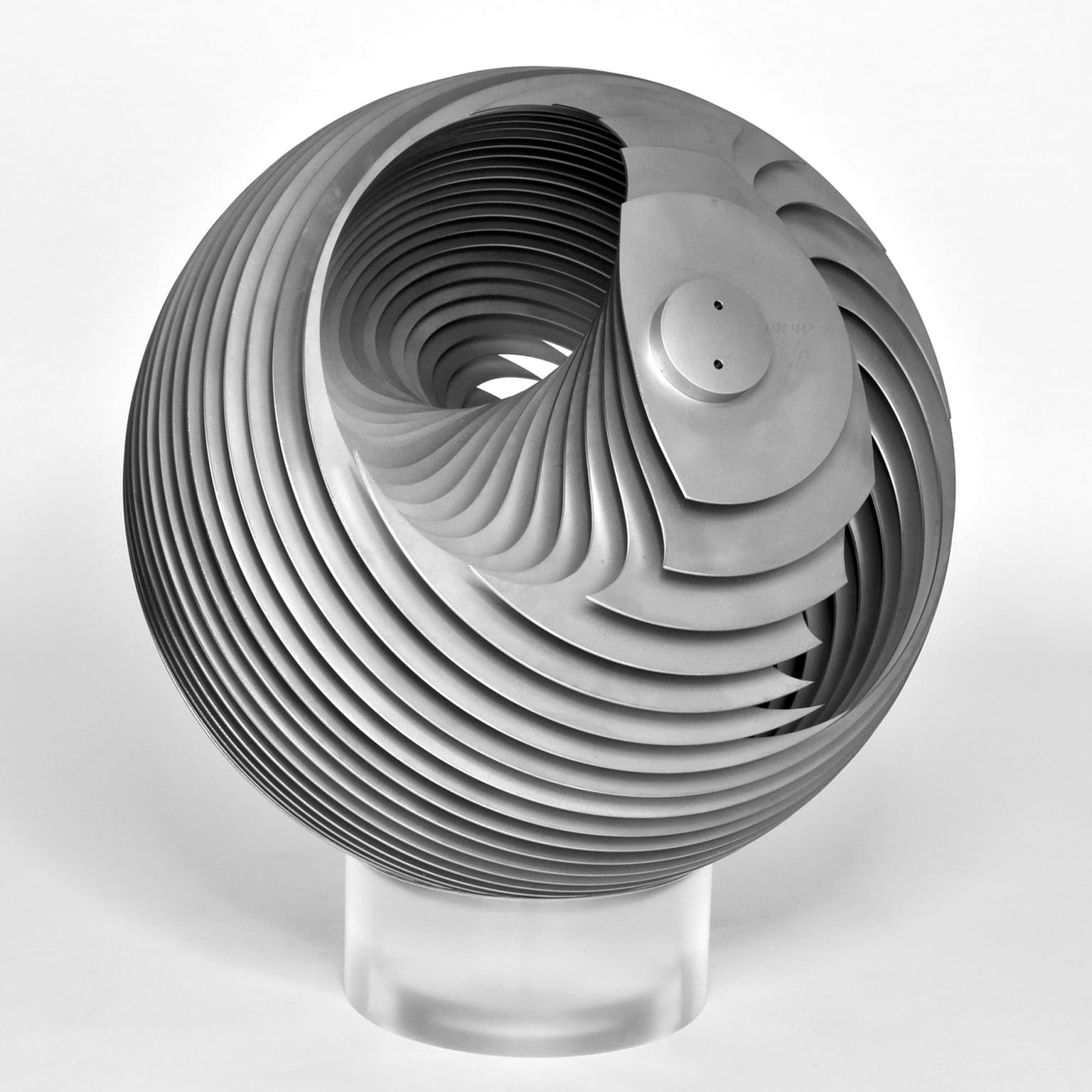Friedhelm Kürpig
Artists
Friedhelm Kürpig
Professor of Descriptive Geometry (retired)
University of Fine Arts Hamburg
Aachen, Germany
Statement
For the author, geometry has not lost anything of its fascination even after over forty years of intense engagement with the subject. As an architect, he finds it a never-failing source of innovation and a symbol of eternal beauty. In his capacity as Professor of Descriptive Geometry at the University of Fine Arts in Hamburg, his most important secondary activity lay in the development and production of educational models as visualizations of geometric laws. These models were generally acquired by Technical Universities as learning material for lectures and seminars. Over the years the emphasis of his work has changed somewhat, and today he prefers to focus on the aesthetic rather than on the didactic aspects of his objects.
Artworks

Rhombic Triacontahedron
External diameter 200 mm
Stainless steel sheet, thickness 1.2 mm
2012

Dupin Cyclide
400 x 360 x180 mm
Stainless steel sheet, thickness 1.5 mm
2011

Worm eaten sphere
360 x 300 x 300 mm
Stainless steel sheet, thickness 1.5 mm
2010